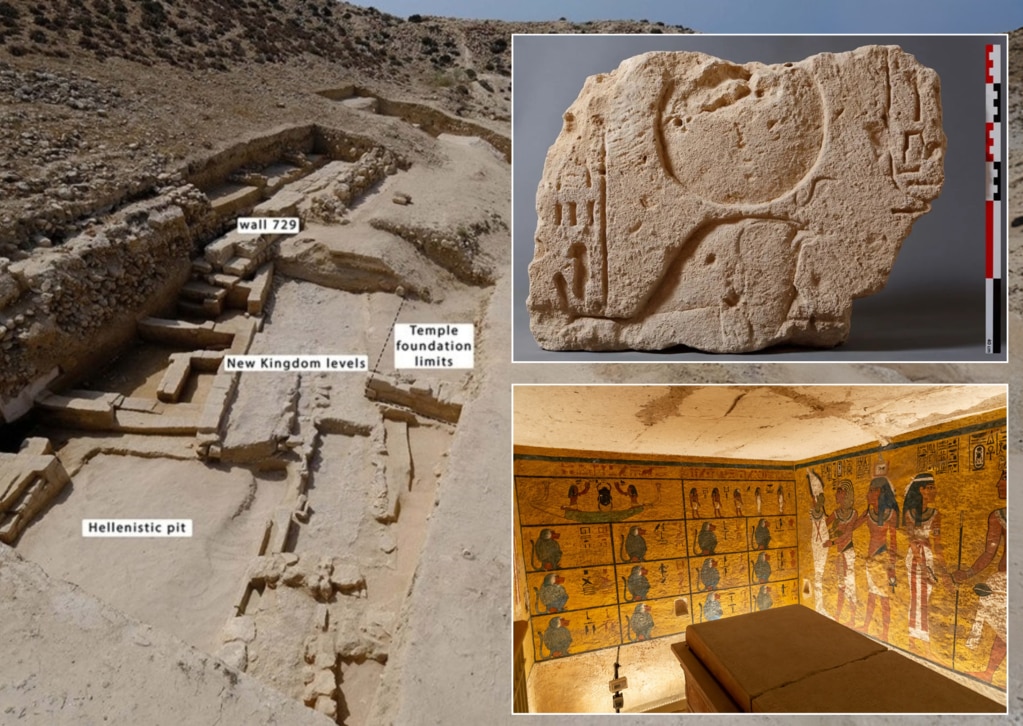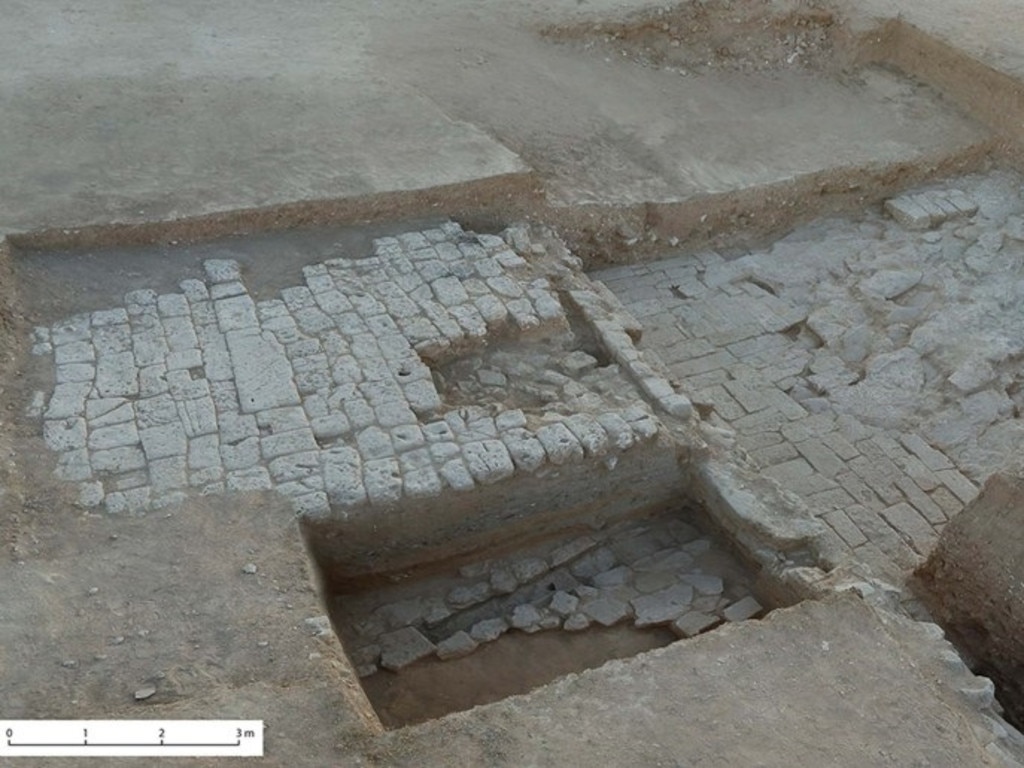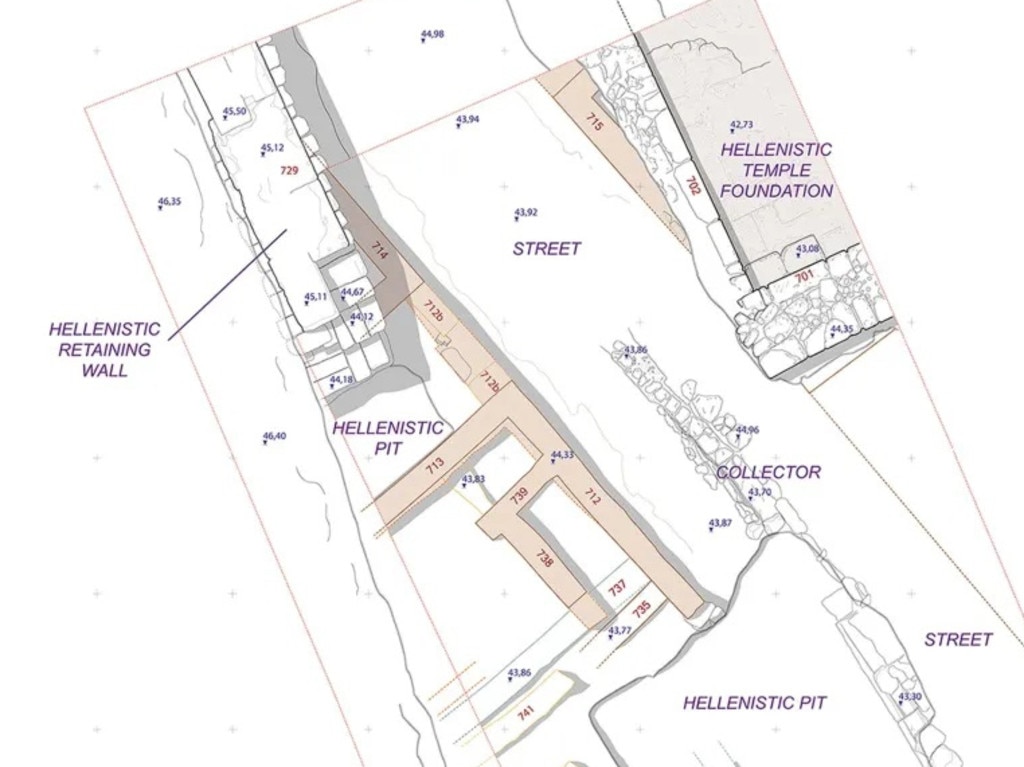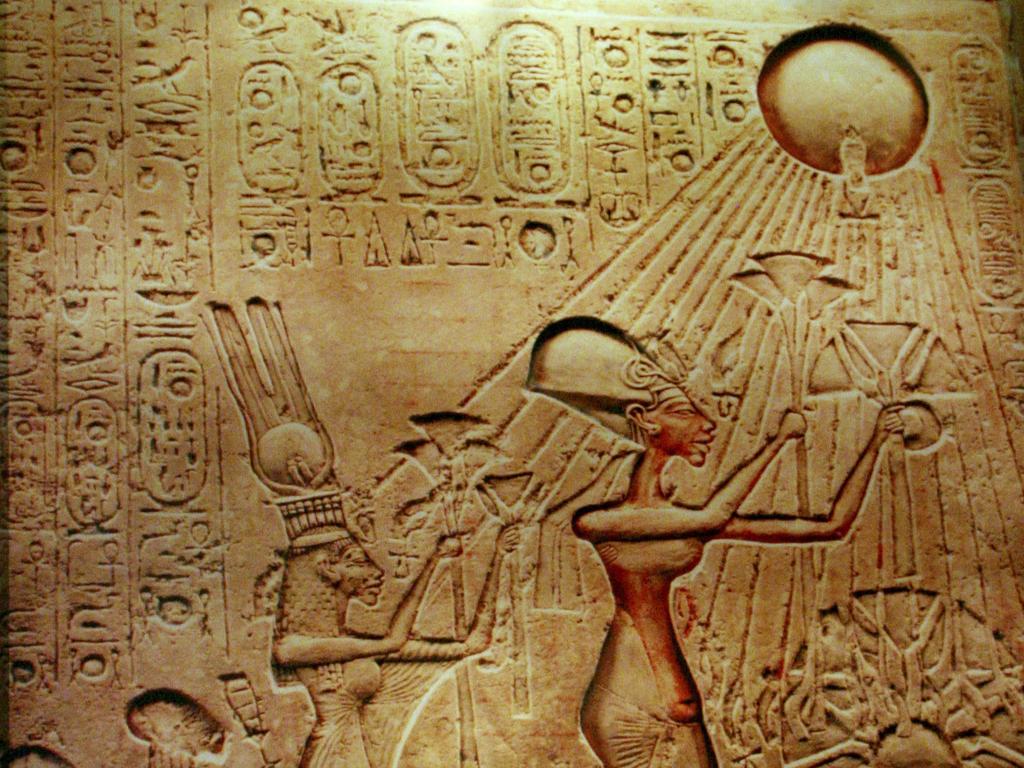Mysterious Egyptian town ‘built by Tutankhamun’s dad’ unearthed
A major town dating back 3400 years has been found, offering fascinating insights into Egypt’s most famous dynasty – so why do archaeologists think Tutankhamun’s father was its founder?

READING LEVEL: ORANGE
Archaeologists* claim to have unearthed a “major” Egyptian town dating back 3400 years.
The settlement offers groundbreaking* insights into Egypt’s most famous pharaoh* dynasty*, with clues about Tutankhamun’s* dad, mum and sister.
While studying a Greek settlement from 332BC in northern Egypt, archaeologists made a stunning discovery: a hidden mud brick town built more than a millennium* earlier.
It likely originated during the powerful 18th Dynasty of Egypt, a period tied to Tutankhamun’s lineage.
The team uncovered what is now the earliest known Egyptian settlement north of Lake Mariout, according to the study published in Antiquity* Journal by Cambridge University Press.
What particularly excited experts was evidence suggesting that the town was founded under Pharaoh Akhenaten — Tutankhamun’s father — and expanded during the reign of Ramses II.

Akhenaten ruled circa 1353-1336 BC alongside his influential queen, Nefertiti, who may have even ruled as pharaoh in her own right after her husband’s death.
One of the site’s most remarkable finds was a stamped amphora* jug bearing the name of their daughter, Merytaton — likely used as a wine label.
Merytaton (also spelled Meritaten) is also thought to have been the sister or half-sister of Tutankhamun.
The discovery led archaeologists to speculate that this could have been a major wine production facility, dedicated to the princess.

Besides jugs and bowls, archaeologists also unearthed temple blocks — dedicated by Egyptian pharaoh Ramses II, who ruled between 1279-1213 BC.
“There was a temple, built by King Ramses II, as well as private funerary* chapels, which mention military personnel,” French National Centre for Scientific Research archaeologist and study author Sylvain Dhennin told Live Science.
Another find includes a street equipped with a drainage system, which especially impressed Manchester University honorary lecturer Dr Roger Forshaw.
“This street was ingeniously* designed with a water-collecting system to drain surface water and protect the fragile mud brick walls,” Dr Forshaw said.

These various finds suggest an organised settlement that may have been used seasonally or by military garrisons*, according to the archaeologists.
“If the settlement was indeed military in nature, it’s possible that there was also a fortified wall and administrative buildings,” said Mr Dhennin.
“The quality of the remains, their planned organisation around a street, could suggest a fairly large-scale occupation,” he added.
Kom el-Nugus, which was first excavated in 2013, is around 43km west of Alexandria, on a rock ridge between the Mediterranean Sea and Lake Mariout.

Until recently, scholars believed the Kom el-Nugus area was only inhabited by Greeks after 332BC.
The name of this mysterious Egyptian settlement has yet to be uncovered — but future digs could reveal its original identity.
It comes as scientists unearthed groundbreaking DNA evidence in relation to King Tutankhamun’s untimely death.
The young pharaoh’s death at just 18 has baffled experts for over a century.
A team of scientists from Egypt’s National Research Centre and Cairo University, working with two German DNA experts, examined tissue samples from several royal mummies, including Tutankhamun himself.

Their findings suggest the teenage ruler was killed by a deadly combination of malaria and health problems linked to royal inbreeding*.
Tim Batty, a general manager of the Tutankhamun Exhibition, hailed the results as “another piece of the great jigsaw” in the story of Egypt’s most famous pharaoh.
Meanwhile, archaeologists also said they discovered an ancient city buried below Egypt’s pyramids.
Researchers from Italy and Scotland claimed to have made the “groundbreaking” discovery after using SAR* radar technology that revealed a sprawling hidden city underneath the Pyramids of Giza.

“A vast underground city has been discovered beneath the pyramids,” the spokesperson for the project announced.
The city was discovered at a depth of 1200m below the pyramids.
At a press conference on March 15, project lead Professor Corrado Malanga said that there was “a whole world” of structures under the site, with even more secrets to be revealed.
“Until yesterday, Egyptologists said there was nothing, that it is an empty mountain of stones, but there are a lot of things,” he said.
This article originally appeared on The Sun and was reproduced with permission.
POLL
GLOSSARY
- archaeologists: people who study buildings, graves, tools and other objects of those who lived in the past
- groundbreaking: original and important; showing a new way of doing or thinking about things
- pharaoh: a king of ancient Egypt, both the head of state and the religious leader
- dynasty: series of rulers or leaders who are all from the same family
- Tutankhamun: sometimes called “King Tut”, he ruled ancient Egypt ruled from 1333 BCE until his death in 1323 BCE, named for Amun, the Egyptian god of the air
- millennium: a period of one thousand years
- antiquity: ancient times, the very distant past especially before the Middle Ages
- amphora: ancient clay jug with two handles
- funerary: used at or relating to a funeral or burial
- garrisons: groups of soldiers living in or defending a town or building, or the buildings that the soldiers live in
- inbreeding: breeding between closely related plants, animals or people
- SAR: synthetic-aperture radar, a type of radar that uses microwaves to create high-resolution images of the Earth’s surface
EXTRA READING
Hidden twist found in pyramids
Was Tut a ‘hand-me-down’ king?
Egypt unveils hidden corridor in pyramid
QUICK QUIZ
- How old is the recently unearthed ancient Egyptian town thought to be?
- What kind of production facility may have operated there?
- What was the remarkable find that led archaeologists to consider this may have been the site’s function?
- How old was young Pharaoh Tutankhamun when he died?
- How might the original name of this mysterious settlement be confirmed over time?
LISTEN TO THIS STORY
CLASSROOM ACTIVITIES
1. Design your own ancient city
Work in a group of two to three to design and build a model of your own Egyptian city. You can use materials like Lego, cardboard, recycled materials, or digital design like Minecraft. In your model, include major landmarks that ancient cities may have had 3400 years ago as mentioned in the Kids News article.
Time: allow 45 minutes to complete this activity
Curriculum Links: History, Design and Technologies, Digital Technologies, Personal and Social, Critical and Creative Thinking
2. Extension
Create a labelled map of the Egyptian city you built above. Include all the landmarks and things you’ve created in your model onto a written map.
Time: allow 15 minutes to complete this activity
Curriculum Links: Mathematics, History, Geography, Personal and Social, Critical and Creative Thinking
VCOP ACTIVITY
I spy nouns
Nouns are places, names (of people and objects), and time (months or days of the week).
How many nouns can you find in the article?
Can you sort them into places, names and time?
Pick three nouns and add an adjective (describing word) to the nouns.

